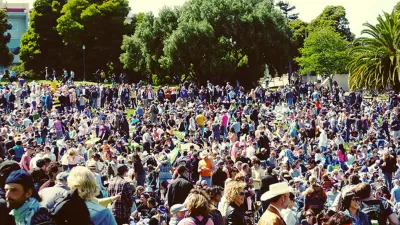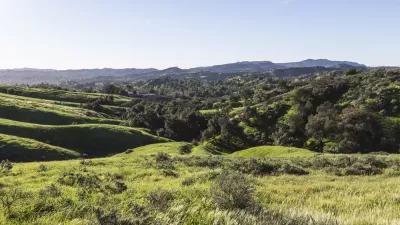As a class assignment, nearly 150 high school students shared their ideas for improvements to Sorensen Park in Lake Los Angeles, California.

In planning and designing new facilities, park and recreation agencies typically seek public input through a meeting or a series of meetings. However, such meetings may not be the most effective way to obtain input that reflects all segments of communities and their diverse viewpoints. Children (under 18 years of age), for example, are often underrepresented or not represented at all. This is certainly alarming but not entirely surprising, considering that the formal or rigid nature of most public meetings can intimidate and discourage kids of all ages from openly sharing their ideas and thoughts. Given that children are key park users and parks contribute significantly to their development and quality of life, we must be intentional and creative in how we engage them in the planning and design of parks, as explained in the article "Engaging Children in the Park Planning Process."
Local educators may serve as important partners in efforts to reach out to the youth, as explained in this Antelope Valley Press article. Recently, nearly 150 students from Littlerock High School in Southern California contributed their thoughts on proposed improvements to Stephen Sorensen Park as part of a writing assignment and survey completed in conjunction with Martin Luther King, Jr. Day. This is all thanks to teacher Joanie Haynes, who decided to get students involved and provide their input during a public comment period for various proposed improvements to Sorensen Park. The students responded to a survey with questions like whether they had ever visited the park, what improvements they would like to see, and what might encourage them to visit the park. Students then had to support their responses with short essays.
FULL STORY: Students propose park improvements

Trump Administration Could Effectively End Housing Voucher Program
Federal officials are eyeing major cuts to the Section 8 program that helps millions of low-income households pay rent.

Planetizen Federal Action Tracker
A weekly monitor of how Trump’s orders and actions are impacting planners and planning in America.

Ken Jennings Launches Transit Web Series
The Jeopardy champ wants you to ride public transit.

Washington Legislature Passes Rent Increase Cap
A bill that caps rent increases at 7 percent plus inflation is headed to the governor’s desk.

From Planning to Action: How LA County Is Rethinking Climate Resilience
Chief Sustainability Officer Rita Kampalath outlines the County’s shift from planning to implementation in its climate resilience efforts, emphasizing cross-departmental coordination, updated recovery strategies, and the need for flexible funding.

New Mexico Aging Department Commits to Helping Seniors Age ‘In Place’ and ‘Autonomously’ in New Draft Plan
As New Mexico’s population of seniors continues to grow, the state’s aging department is proposing expanded initiatives to help seniors maintain their autonomy while also supporting family caregivers.
Urban Design for Planners 1: Software Tools
This six-course series explores essential urban design concepts using open source software and equips planners with the tools they need to participate fully in the urban design process.
Planning for Universal Design
Learn the tools for implementing Universal Design in planning regulations.
Heyer Gruel & Associates PA
Ada County Highway District
Institute for Housing and Urban Development Studies (IHS)
City of Grandview
Harvard GSD Executive Education
Toledo-Lucas County Plan Commissions
Salt Lake City
NYU Wagner Graduate School of Public Service





























